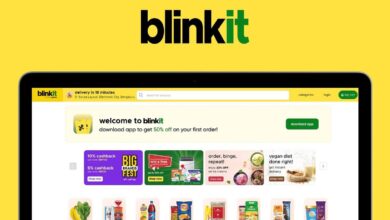Elevate your marketing strategy with location data insights (VB Live)
Any time a phone requests location — from a navigation app, weather app, or any other source — it reveals a mobile ID, a time stamp, and latitude-longitude coordinate. Contextualize that with how those data points intersect with a place of interest — an airport, a hotel, a restaurant, a retail store, a college campus, a sports venue — and you have location data, a powerful tool that can crack open an unprecedented number of insights about customer behavior, competitor operations, and more.
“You can start to build interesting segmentation and understanding of your clients and audiences based on where they go,” says David Bairstow, SVP of product management at Skyhook. “You can quickly categorize any device or any group of devices by what they’re doing. You can identify people who have a strong preference for high-end shopping versus budget or family shopping. You can understand what kind of hotels they stay at. We even get down to a level of which particular airlines and flights particular devices are flying on.”
Location data can even help you drill down into census data and infer demographic information about who your customers are and where they’re coming from when they visit your business.
“There is great, rich information about your customers that can inform marketing strategies in how you operate as a company,” Bairstow adds. “But the data itself is also very actionable, because all of this segmentation starts at the bottom up. Any segmentation can be quickly targeted through whatever advertising platforms you work with, and everything is measurable.”
This kind of data is critical when you’re looking at customer loyalty — specifically splitters, because for many companies, that’s the most critical opportunity, says Sheryl Jacobson, principal consultant on strategy and analytics at Deloitte Consulting.
She points at the hospitality and travel industry as a prime example. Most hotel customers are “splitters,” with a go-to brand that they prefer, but will still switch based on convenience, price, location availability, and so on.
“What the hotels haven’t been able to access is how big that splitting opportunity is: Who is it that’s splitting, where else are they going, and how do I think about intervening, given that?” Jacobson says. “Your ability to home in on where a phone is resting, assuming the person has opted into location services, means you can tell if they’re currently staying at a Hyatt, and if this is a person who has stayed at Starwood properties their last three times.”
This goes far beyond the self-report data that hotels have previously had to rely on. You can drill down to the type of travel they’re doing, business or leisure, with their family or alone, for true behavior-based segmentation, and reach out with offers in the moment, and with a much higher degree of confidence around the design and appropriateness of your programs.
The splitting opportunity for airlines is even bigger than for hotels, Jacobson says.
Location data means that an airline can actually know for sure when someone is splitting, and gives it the opportunity to intervene in the moment, as well as offer the opportunity to explore some of the business issues around airline splitting with differential data: Where does splitting happen most often, and on what types of routes? Is it competitive intensity, a particular terminal in a particular airport, a price?
Airlines are also interested in the overall travel experience — what are its customers doing in the hours leading up to arriving at the airport? What are they doing at the airport when there’s a delay? Are there better ways for the airline to improve that experience? And what kind of opportunities does this unlock?
Location data is also significant for sporting teams, she adds, tackling some of their biggest challenges.
“It solves an age-old problem for these teams,” she says. “How do you get corporate sponsors? How do you think about the value to them? How do you prove out and measure the value to them in this process?”
For corporate sponsors, it helps ensure they’re reaching the right people; for the teams, it helps them determine who they should partner with. Does it make sense for, say, the Bulls and McDonald’s to partner up and run a special on Big Macs post-Bulls games, for instance. Would that actually matter to the folks that sit there?
You can take a look at your most loyal customers, outside of the season ticket holders — your core base and most fierce fans. But you can also know what they’re doing before, after, and in between.
“So you would know, with a great degree of certainty — before a game, this specific proportion of people are stopping at Chik-Fil-A, this one at McDonald’s.” she says. “It’s a very actionable way to dig into the fanbase.”
And that’s true of any event space or franchise that taps into the sponsorship revenue streams. You can think of it as a much broader anchor around a particular event, around a business revenue stream of sponsorship.
“Whether it’s a huge Salesforce event or VMworld or any others, there’s a great captive audience for lots of people, but it’s been hard to group them and reach out to them in any coherent way,” Bairstow adds.
The retail opportunity is also significant, Jacobson says.
“Again, it’s an age-old problem of how Walmart could grab that revenue being spent at CVS, minimize that splitting, and understand why it happens — that’s a direct impact on the bottom line,” she says.
On the retail side, particularly when you combine it with purchase data and the receipt data that’s available, whether it be from credit cards or what the actual retailer sends, you know literally who the Walmart shoppers are, what percentage are splitting trips between Walmart and Target, whether they consistently stop off at CVS beforehand, and more.
Source: VentureBeat
To Read Our Daily News Updates, Please visit Inventiva or Subscribe Our Newsletter & Push.




